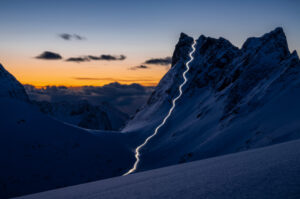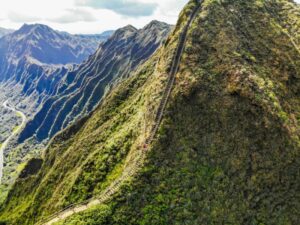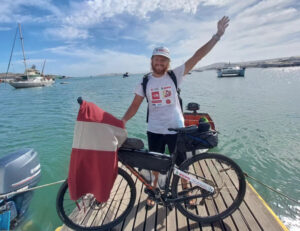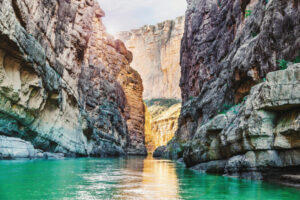People like Dervla Murphy are rare as hen’s teeth. Rarer: Hens have, in fact, been known to possess teeth when they belong to a mutant variety called a Talpid. Murphy, on the other hand, is the only woman who in 1963 courageously cycled alone from Dunkirk to Delhi. She is in fact, the only woman we can account for who has traveled that route by bike at all.

Dervla Murphy still lives in the same home in Lismore, Ireland where she grew up. Photo: courtesy of The National
The seeds of adventure were planted for Murphy around her tenth year. For her birthday, she received a second-hand men’s push bike and an atlas. Over a lifetime of exotic travel, she has made good use of both. Murphy can still recall where she was when, as a 10-year-old, it occurred to her that if her legs kept moving around the pedals of her bicycle, she could make it all the way to India. Eventually, at age 32, she did just that. It became the subject of her first and best-known book, Full Tilt, which launched a lifelong travel writing career.
A lot was happening in 1963. It was the year Beatlemania hit the airwaves, Martin Luther King gave his famous I Have a Dream speech and President Kennedy was assassinated. It was also just 45 years after women were given the right to vote in Murphy’s native country, Ireland. Women in Afghanistan, however, still did not have that privilege in 1963.
It was also a time when women could be forgiven for cautiously electing not to visit such regions. Unlike today, security that comes from traveling with GPS, cell phones, the internet or email weren’t available. To remain connected to loved ones back home, one would need to collect mail from the post office along the route. Murphy even posted spare tires to collect along the way, since her bike required an uncommon variety.
Such a journey was harder and less comfortable back in 1963. Forget about technical fabrics designed to withstand hot or cold climates. Forget, too, about elaborate materials like carbon fibre to make a bicycle lighter. For Murphy, traveling in comfort has never been a high priority. Heck, her packing list for the almost six-month journey included one change of clothes and 12 biro pens. But void of home comforts and armed with a fearless attitude, Murphy took on all the idiosyncrasies that travel threw her way. In 1963, she journeyed through the likes of Afghanistan and Iran: countries in which women still aren’t considered equal, and at a time of political unrest.

Murphy dismisses the notion that she is courageous. “It doesn’t take courage,” she told an interviewer recently. “It takes curiosity.”
Fear though, was surely on Murphy’s mind in 1963 when she packed a pistol for her journey. She’d expected it to act simply as comfort but she used it many times, including to scare off a wolf pack and to deter a policeman who had different ideas about their encounter than she.
Resilience ultimately took Murphy to Delhi while withstanding one of the coldest European winters on record and overcoming three broken ribs following a rifle butt to her rib cage.
Between Dunkirk and Dehli, a great many adventures within the adventure take place. Full Tilt tracks the journey through a series of vivid and witty diary entries where Murphy affectionately speaks about her travels with Roz (the name she gives to her bicycle; a trusted friend who is still in use even now, some 50 years later).
But it would be an injustice to praise Murphy based on this one title. Her celebrated success as a travel writer spans 26 books of compelling adventures. She credits her attitude to travel as responsible for her success: her natural stoicism and her ability to temporarily integrate herself into the life of a country. She doesn’t collect souvenirs, she collects experiences.
At first, her subsequent titles followed the same approach as Full Tilt; vividly capturing the experiences she’d had within communities and cultures of remote places. In Ethiopia with a Mule (1968) recounts her hazardous trek through Ethiopia’s remote regions using mules as transport. “Not only was it incredibly beautiful but it also felt ancient and otherworldly, and almost unchanged,” she recalled. “For three weeks, I was in territory that was so remote that people didn’t even use money.”
Tibetan Foothold (1966) is written of her observations in orphanages of Northern India. After a short break from travelling while raising her daughter Rachel, she was back at it in 1976 this time with her 5-year-old in tow. On a Shoestring to Coorg: An Experience of South India describes the pairs travels by local transport from Bombay to Coorg.

Following a short break from traveling in the early 1970s, after giving birth, she took her young daughter Rachel with her on several subsequent adventures. At 14, Rachel, left, still joined her.
As time has progressed, Murphy takes a slightly more political turn. Ordinarily, this would be a daring decision for a travel author, but Murphy’s views are charmingly delivered. Race to the Finish? The Nuclear Stakes (1981) describes her observations on nuclear energy and Visiting Rwanda (1998) tells the chilling story of the genocide in that country.
Although Murphy’s work earned her many awards, she remained largely unchanged through it all — modest, hard-working, fiercely independent. She lives in the same small village in which she was raised, in Lismore, Ireland. Her home is void of television, central heating and a washing machine. She has no cell phone and only recently purchased a computer for writing emails. She has always written in longhand and later typed it up on a typewriter.
“You could say I’m reluctantly retired from writing books,” she wistfully told an interviewer in 2018. Now 87, poor health and osteoarthritis in her neck challenges her. She suffers from hepatitis (though in true Murphy character, one doubts she considers it “suffering”), and she has an immobilizing heart condition.
But by all accounts, her spirit and fierce independence bear resemblance to the Murphy of 1963, who said, “I regard this sort of life, with just Roz and me and the sky and the earth, as sheer bliss.”






